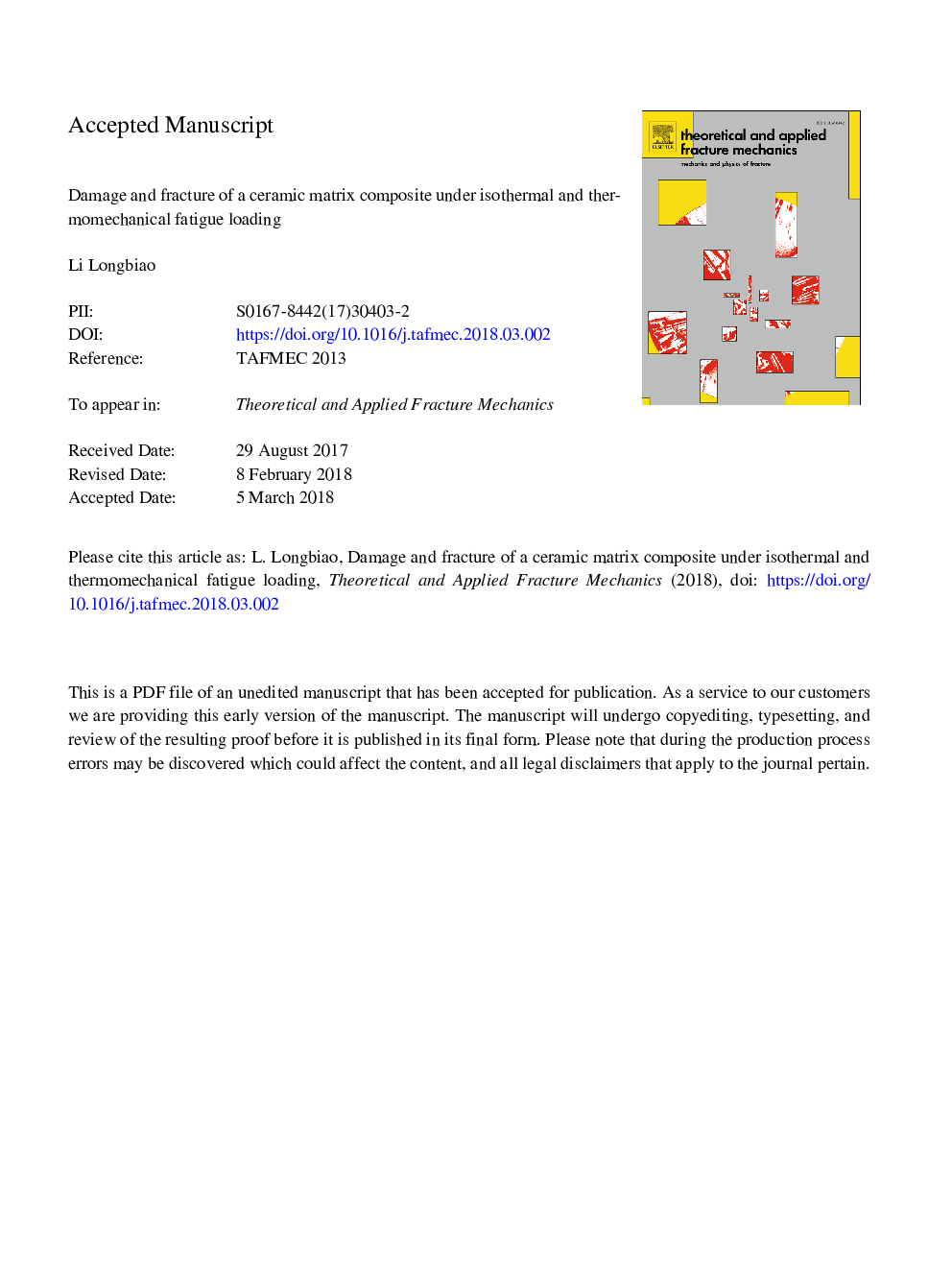| Article ID | Journal | Published Year | Pages | File Type |
|---|---|---|---|---|
| 7196166 | Theoretical and Applied Fracture Mechanics | 2018 | 59 Pages |
Abstract
In this paper, the damage and fracture of long-fiber-reinforced ceramic-matrix composites (CMCs) subjected to the isothermal cyclic fatigue, dwell-fatigue, and in-phase (IP) and out-of-phase (OP) thermomechanical fatigue (TMF) have been investigated. The fiber/matrix interface shear stress is determined as a function of testing temperature and material properties, which affects matrix multicracking and fiber/matrix interface debonding/sliding upon unloading/reloading. The relationships between the cyclic testing temperature, applied cycle number, fatigue peak stress level, matrix crack spacing, fiber/matrix interface debonding/sliding, and the shape, location and area of thermomechanical fatigue hysteresis loops have been established. The damage evolution of fatigue hysteresis dissipated energy, fatigue peak strain, fatigue hysteresis modulus and fiber/matrix interface debonding/sliding lengths versus applied cycle numbers subjected to isothermal cyclic fatigue, dwell-fatigue, IP/OP TMF cyclic loading have been compared. The damage and fracture of cross-ply SiC/MAS composite subject to different fatigue loading types have been predicted. The comparison analysis among the isothermal cyclic fatigue, dwell-fatigue with different hold-times, and IP/OP TMF loading have been conducted, and the effects of testing temperature and loading frequencies on fatigue damage and fracture of long-fiber-reinforced CMCs have been discussed.
Related Topics
Physical Sciences and Engineering
Engineering
Mechanical Engineering
Authors
Li Longbiao,
